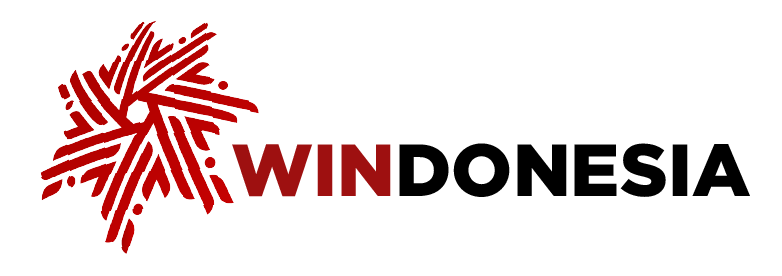Sector
Energy
Indonesia possesses vast, distributed, and diverse energy resources. The country’s energy subsectors include gas, clean water, and electricity, with demand projected to increase to 464 terawatt-hours (TWh) by 2024 and further increase to 1,885 TWh by 2060. The use of renewable energy is a top priority and the government has set ambitious goals in the General Planning for National Energy (RUEN) and General Planning for National Electricity (RKUN) to integrate 23 percent renewable energy into the national energy mix by 2025. At least US$41.8 billion of investments are needed to fully realize the goal.
View moreEnergy
Indonesia possesses vast, distributed, and diverse energy resources. The country’s energy subsectors include gas, clean water, and electricity, with demand projected to increase to 464 terawatt-hours (TWh) by 2024 and further increase to 1,885 TWh by 2060. The use of renewable energy is a top priority and the government has set ambitious goals in the General Planning for National Energy (RUEN) and General Planning for National Electricity (RKUN) to integrate 23 percent renewable energy into the national energy mix by 2025. At least US$41.8 billion of investments are needed to fully realize the goal.
Despite having a renewable energy potential estimated at around 3,000 gigawatts (GW), current utilization is merely about 12.74 GW or 3 percent. This renewable energy potential includes solar energy, which is widely spread across Indonesia, especially in East Nusa Tenggara, West Kalimantan, and Riau, with a potential of approximately 3,294 GW and utilization of 323 megawatts (MW). Another renewable energy, hydro energy, with a potential of 95 GW, is primarily found in North Kalimantan, Aceh, West Sumatra, North Sumatra, and Papua, with utilization reaching 6,738 MW.
Additionally, bioenergy, encompassing biofuel, biomass, and biogas, is distributed throughout Indonesia with a total potential of 57 GW and utilization of 3,118 MW. Wind energy (>6 m/s) found in East Nusa Tenggara, South Kalimantan, West Java, South Sulawesi, Aceh, and Papua has a substantial potential of 155 GW, with utilization of 154 MW.
Furthermore, geothermal energy, strategically located in the “Ring of Fire” region covering Sumatra, Java, Bali, Nusa Tenggara, Sulawesi, and Yogyakarta has a potential of 23 GW and utilization of 2,373 MW. Meanwhile, marine energy, with a potential of 63 GW, especially in Yogyakarta, East Nusa Tenggara, West Nusa Tenggara, and Bali, remains untapped.
Among the renewable energy sources and their potential, these projects entail significant investments. According to the Electricity Supply Business Plan (RUPTL) of the State Electricity Company (PLN), from 2021 to 2030, geothermal power plants require an investment of US$17.35 billion, large-scale solar power plants necessitate US$3.2 billion, hydropower plants require US$25.63 billion, and base renewable energy power plants require US$5.49 billion. Additionally, bioenergy power plants require an investment of US$2.2 billion, wind power plants US$1.03 billion, peaker power plants US$0.28 billion, and rooftop solar power plants IS$3 billion.
As of 2022, hydro and geothermal are the primary drivers of growth. Private entities had enhanced the capacity of hydro power by adding 603.66 MW in mini, micro, and standard hydro facilities, reaching a total of 2,459.72 MW. Meanwhile, the geothermal sector experienced a 412 MW increase over the last five years from the private sector, bringing the total capacity to 1,782.8 MW by 2022. Aside from these two renewable energy, sources solar energy has also presented significant opportunities, particularly given Indonesia's potential for floating solar systems on reservoirs and dams.
Furthermore, the country’s other national energy subsector of gas underscores Indonesia’s wealth in natural gas. Indonesia’s natural gas reserves are predominantly methane (80-95 percent), which can be used directly or processed into Liquefied Natural Gas (LNG). However, demand has greatly increased over the past decade for Liquefied Petroleum Gas (LPG). From 2018 to 2022, domestic LPG production reached between 1.9 to 2 million tons, which is insufficient to meet national needs, leading to increasing imports that reached 6.74 million tons in 2022.
Currently, the Energy and Mineral Resources Ministry is working to attract new investments for LPG refineries through a cluster-based business scheme for the construction or future development of new LPF refineries. The ministry has identified the potential of rich gas to produce an additional 1.2 million tons of LPG cylinders domestically.
Latest News
The South Sulawesi Provincial Government, in collaboration with Bank Indonesia (BI) held the 2025 South Sulawesi Investment Challenge (SSIC) Finals at Novotel Makassar in Makassar City, South Sulawesi on August 4, 2025, as part of the South Sulawesi Investment, Trade, and Tourism Acceleration (PINISI SULTAN) Forum.
The event, which has "Accelerating South Sulawesi's Economic Growth through Green & Blue Economy-Based Investment and Downstreaming" as its theme, served as a platform to identify flagship investment projects ready to offer (IPRO) from each regency and city of South Sulawesi aligned with long-term development goals and oriented toward increasing local added value.
The SSIC 2025 Finals was opened by South Sulawesi Provincial Government Assistant III A. Darmawan Bintang, who represented South Sulawesi Governor Andi Sudirman Sulaiman.
He emphasized that the event is a competition as well as a platform to showcase the region's readiness to attract investment, encourage downstream industry development, and improve community welfare. SSIC 2025's theme is also considered to align with national and regional policy directions for sustainable economic development.
Meanwhile, BI South Sulawesi Province Representative Office Head Rizki Ernadi Wimanda reported that SSIC 2025 successfully amassed 18 clean and clear (CnC) projects from 16 regencies and cities. After a selection process, field verification, and technical assistance in preparing IPRO proposals, the six best projects were selected as finalists for the 2025 SSIC. These included:
- The Drinking Water Supply System project presented by Parepare Mayor Tasming Hamid;
- The Industrial Salt Factory project presented by Jeneponto Deputy Regent Islam Iskandar;
- The Makassar UNTIA Stadium project presented by Makassar Mayor Munafri Arifuddin;
- The Agricultural Waste-Based Bioethanol Industry project presented by Bone Deputy Regent Andi Akmal Pasluddin;
- The Seaweed Industry project presented by Luwu Deputy Regent Muh. Dhevy Bijak;
- The Rice Milling Industry project presented by East Luwu Regency Investment and One-Stop Integrated Services Office (DPMPTSP) Abd. Wahid Rahim Sangka.
They were evaluated by a panel of judges consisting of the of Promotion for the Investment and Downstream Ministry/Investment Coordinating Board (BKPM) Americas and Europe Region Promotion Director, the Embassy of the United Kingdom in Jakarta East Java Regional Outreach Manager, the Acting South Sulawesi Provincial Research and Development Planning Agency (Bappelitbangda) Head, a Universitas Hasanuddin Faculty of Economics & Business Professor, and a PT Sucofindo Indonesia Regional Planning Expert.
After the judging process, the three best proposals were selected for SSIC 2025. Bone Regency's Agricultural Waste-Based Bioethanol Industry project won first place, followed by the Makassar UNTIA Stadium project in second and Luwu Regency's Seaweed Industry project in third.

